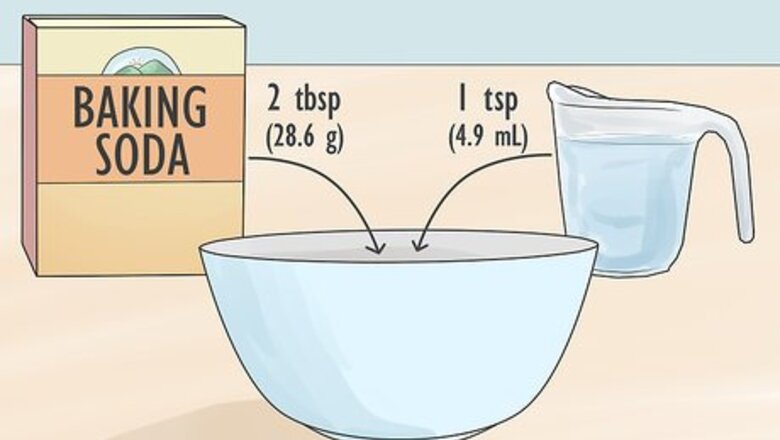
views
- Mix baking soda with water to make a paste, then scrub your hands with it to remove fish smells.
- Alternatively, wash your hands with lemon juice and vinegar.
- Toothpaste will also work in a pinch.
Making a Baking Soda Paste
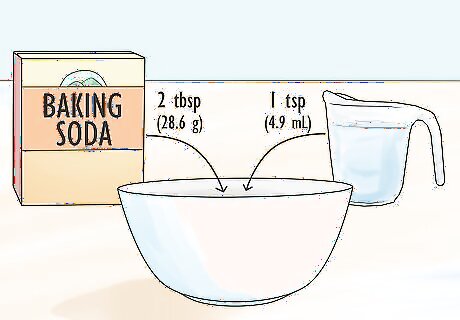
Pour 2 tbsp (28.6 g) of baking soda into a bowl and add 1 teaspoon (4.9 mL) of water. Baking soda is used in many household cleaners and air fresheners because it naturally absorbs odors. Take advantage of this quality by making a baking soda wash for your hands. Start by mixing the baking soda and water together with a spoon until it forms a paste. If the baking soda is still too powdery, add a little more water. Don't dump in so much that the mixture is mostly liquid. This won't stay on your hands and the smell will remain.
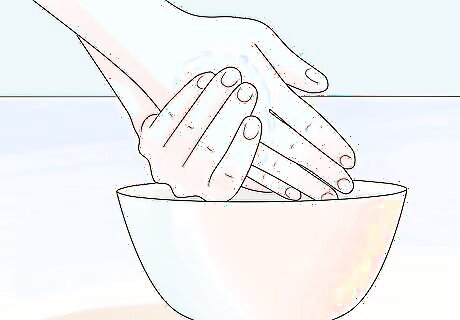
Rub the paste all over your hands. Scrub your hands and get the mixture in all the places the fish touched. This allows the baking soda to neutralize the odors from the fish. Remember to scrub between your fingers and the backs of your hands as well. Then let the paste sit on your hands for about a minute. Scrub well so you get rid of all the remaining scales and remnants of the fish. Any particles left behind might still smell.
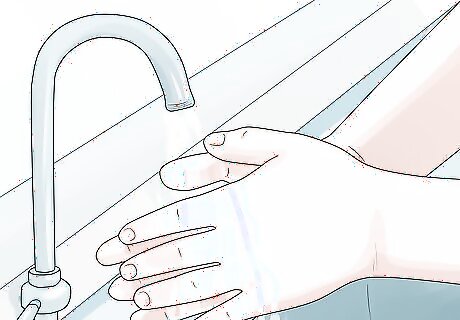
Rinse your hands with water. When you’ve scrubbed your hands with the baking soda paste, rinse your hands under the faucet. This should remove any remaining baking soda residue as well as the fish odor. If your hands still feel sticky or there is baking soda residue on them, wash your hands normally with soap and water.
Mixing a Lemon and Vinegar Cleaner
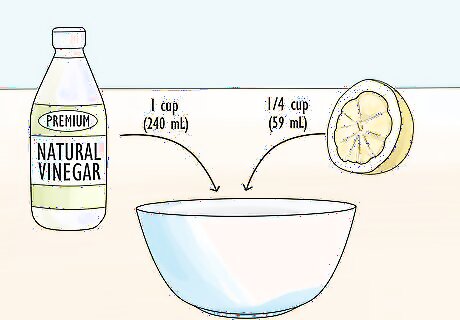
Pour 1 cup (240 mL) of vinegar and ⁄4 cup (59 mL) of lemon juice into a bowl. Vinegar binds with odors and removes them from the air, while the citric acid in lemon juice neutralizes the smelly ammonia in fish. Combine these 2 ingredients in a bowl. Then add a drop of dish soap. Mix the contents together with a spoon and let it sit for 30 minutes. The lemon juice can be freshly-squeezed or from a store-bought bottle. It will have the same effect. If you have sensitive skin, you should skip this solution. Undiluted vinegar can burn and irritate your skin. Consider another solution if you're prone to skin irritations.
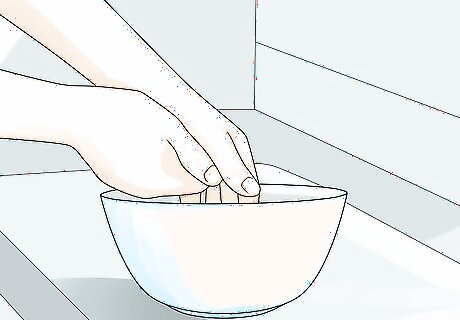
Scrub your hands with the mixture. After the contents have been sitting for 30 minutes, put your hands into the bowl and scrub them. Rub the mixture on all the places where the fish touched. Remember to scrub in between your fingers as well. Do this over a sink to avoid spilling the contents on your table. If you have any cuts on your hand, be prepared for this mixture to sting a bit.

Wash your hands with soap and water after. After scrubbing your hands with the vinegar and lemon mixture, wash your hands normally. Use soap and warm water, and rinse your hands thoroughly afterward. This should remove the fish odor and leave behind a citrusy smell.
Washing Your Hands with Toothpaste

Wet your hands with warm water. Toothpaste is designed to neutralize bacteria and improve your breath. The same mechanism helps combat odors from fish. Start by running your hands under the faucet and getting them wet. If your hands are dry, the toothpaste won’t spread well. Rub them together so the water spreads over the front and back of your hands.
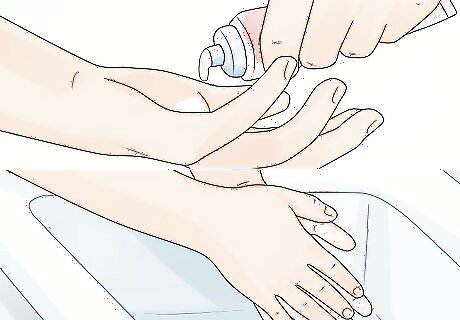
Squeeze a dab of toothpaste onto your hands and rub it around. You can use the same amount you would use to brush your teeth. Rub the toothpaste all over the front and back of your hands. If the fish touched anywhere besides your hands, like on your arms, rub toothpaste here as well. All types of toothpaste should work for this method because toothpaste is designed to scrub bacteria off your teeth. The same mechanism can scrub the smelly fish bacteria off your skin. For the best results, use a toothpaste that contains baking soda. Baking soda naturally removes smells, so the combination will work well for fish smells.
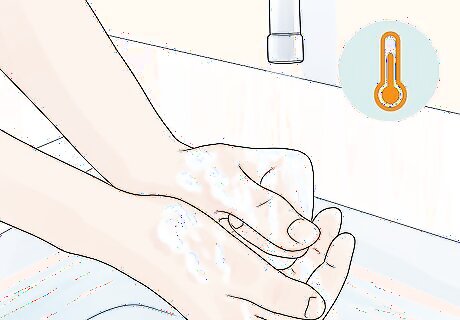
Rinse the toothpaste off with warm water. After you’ve spread the toothpaste all over, wash it off with warm water. Rinse your hands well so no sticky residue stays behind. The fish smell should come off and your hands will have a new, minty aroma. If your hands still feel sticky or clammy after the toothpaste scrub, wash your hands normally with soap and water.
Rubbing Your Hands on Stainless Steel
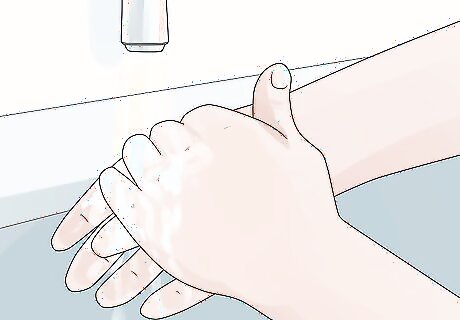
Rinse your hands off with water. Stainless steel can absorb the fishy smell, but not the solid fish pieces. Start by rinsing off your hands under the faucet to remove any remaining fish pieces. While there are proponents of using hot water or cold water to remove odors, there is no official difference between the two. Just make sure the water is clean and flowing.
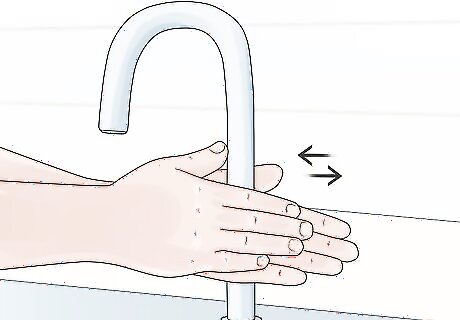
Rub your hands on a stainless steel faucet for one minute. Proponents say that certain molecules in stainless steel bind with odor molecules and reduce smells. Rub your hands on the faucet or another stainless steel appliance in your kitchen. Remember to rub the front and back of your hands on the steel so it absorbs all the smell. There are also special stainless steel bars designed for removing odors. If you don’t have a stainless steel faucet in your home, you could try ordering one of these. Keep in mind that they can be fairly expensive and cost up to $30.
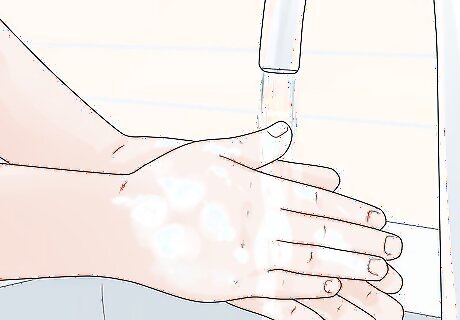
Wash your hands normally with soap and water. After rubbing your hands on the stainless steel, remove any remaining fish pieces with a thorough hand washing. Rinse your hands completely when you’re finished. Wipe down your faucet well after rubbing your hands on it. Although stainless steel absorbs odors, any fish remnants left behind can start smelling again. Use a cleaning wipe to wash off the faucet when you're done. If the faucet still smells after this, try one of the other methods for removing fish smell on it.














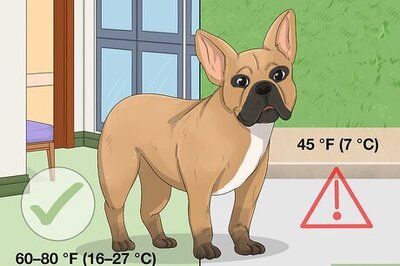

Comments
0 comment